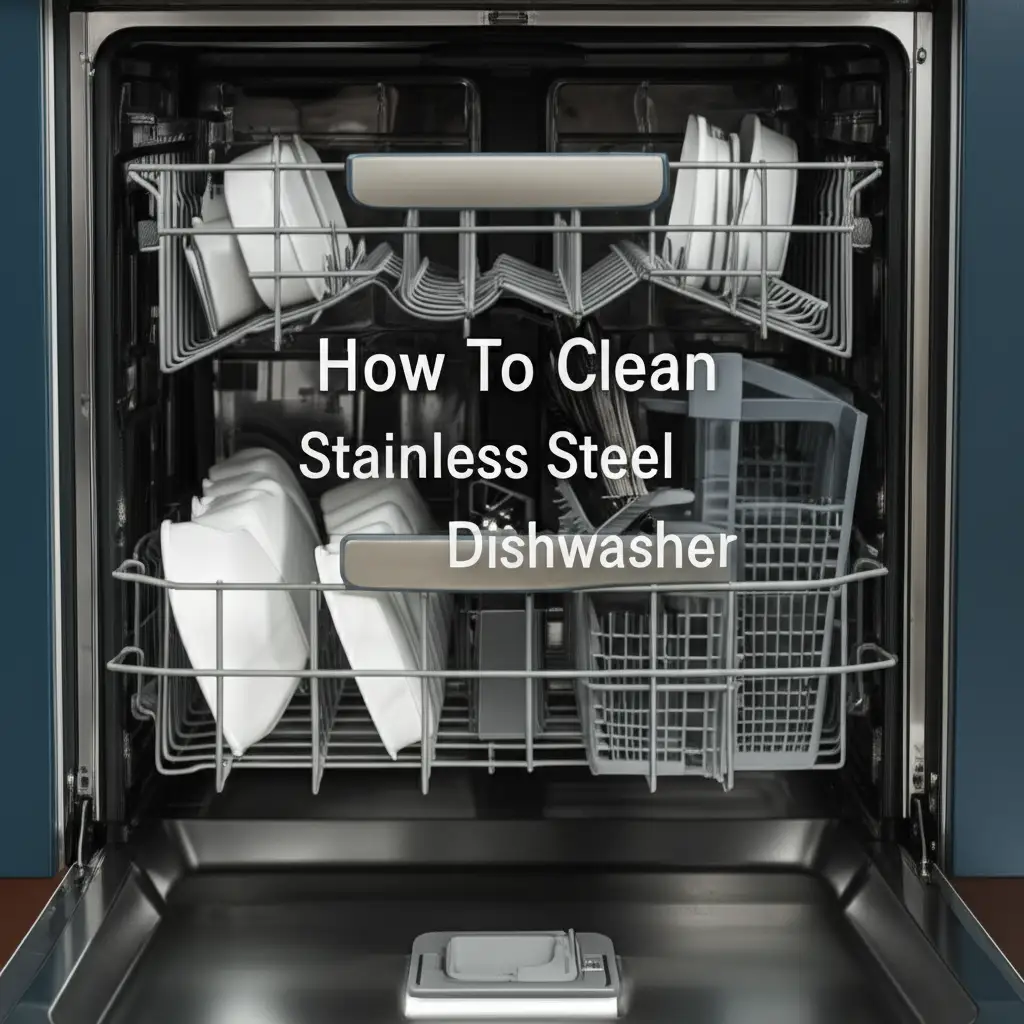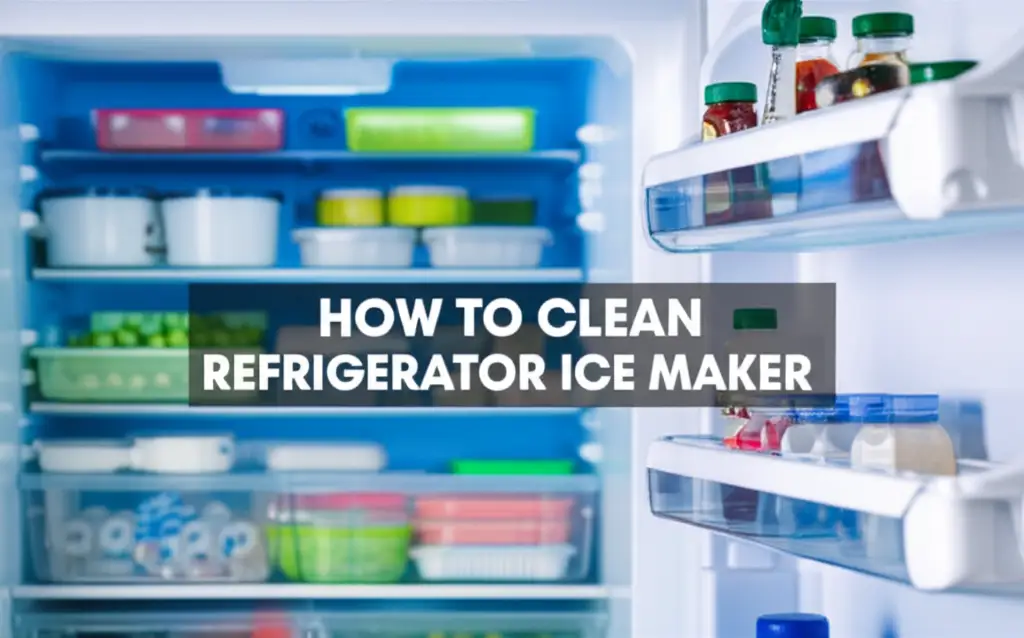· Appliance Care · 15 min read
How To Clean Dishwasher With Vinegar

Effortlessly Clean Your Dishwasher with Vinegar: A Complete Guide
Tired of cloudy dishes or a strange smell from your dishwasher? Many people face this common issue. Your dishwasher works hard to clean your plates, but it also gets dirty itself. Food particles, grease, and hard water minerals build up inside. This buildup causes odors and reduces cleaning power. Learning how to clean dishwasher with vinegar offers a simple and natural solution.
Vinegar is a powerful, eco-friendly cleaner. It effectively cuts through grime and eliminates unpleasant smells. This guide will walk you through the entire process. You will learn about the supplies you need and detailed steps for a sparkling clean appliance. I will also cover specific issues like mold and hard water. You can restore your dishwasher’s performance and freshness.
Takeaway
- Gather Supplies: Get white vinegar, a spray bottle, and a soft cloth.
- Empty and Inspect: Remove all dishes and clear large debris.
- Vinegar Cycle: Run a hot cycle with a cup of white vinegar in a top-rack safe bowl.
- Hand-Clean Components: Wipe down the door, spray arms, and filter.
- Regular Maintenance: Clean your dishwasher monthly with vinegar to prevent buildup.
How do I clean my dishwasher with vinegar?
Cleaning your dishwasher with vinegar is simple. First, empty the dishwasher completely. Place one cup of white vinegar in a dishwasher-safe bowl on the top rack. Run a hot water cycle without detergent. This method naturally dissolves grease, breaks down mineral deposits, and eliminates odors, leaving your appliance fresh.
Why Your Dishwasher Needs Cleaning: The Unseen Buildup
Your dishwasher cleans dishes every day. Over time, it collects a surprising amount of dirt. Food scraps, grease, and soap scum cling to its inner surfaces. Hard water minerals, like calcium and magnesium, leave white, chalky deposits. These deposits are called limescale. This unseen buildup affects your dishwasher’s performance.
When buildup accumulates, your dishes may come out cloudy or still feel greasy. You might notice a stale or musty smell every time you open the door. This indicates a deeper problem. The residue clogs spray arms, reducing water pressure. It also coats the heating element, making it less efficient. This means your appliance uses more energy. It also does not clean as well as it should.
Vinegar offers a powerful cleaning solution. Its acetic acid helps dissolve mineral deposits and grease. It also acts as a natural deodorizer. Regular cleaning with vinegar prevents these problems. It ensures your dishwasher works at its best. This keeps your dishes spotless and your kitchen fresh. Maintaining a clean dishwasher extends its lifespan. It also improves its overall cleaning power. If you have significant mineral deposits, learning how to clean calcium buildup in dishwasher can provide additional strategies to tackle stubborn residue effectively.
Essential Supplies Before You Start Cleaning Your Dishwasher
Cleaning your dishwasher with vinegar requires just a few basic items. You likely have most of these supplies already in your home. Gathering them beforehand makes the process smooth and efficient. You want to avoid interruptions once you start.
First, you need white vinegar. Distilled white vinegar is best for cleaning tasks. Its acidity helps break down tough grime and odors. Avoid using apple cider vinegar, as it can leave a residue or a different smell. You will need about one to two cups for a cleaning cycle.
Next, grab a spray bottle. This is useful for pre-treating specific dirty areas. It helps apply vinegar precisely to stubborn spots. A soft cloth or sponge is essential for wiping down surfaces. It cleans the door, gaskets, and other accessible parts. An old toothbrush also comes in handy. It helps scrub hard-to-reach crevices, especially around the filter and spray arms.
You might want to wear a pair of rubber gloves. While vinegar is natural, it can dry out your hands with prolonged contact. A small, dishwasher-safe bowl is also necessary. You will place the vinegar in this bowl during the cleaning cycle. Having these items ready ensures you are prepared for a thorough cleaning.
Step-by-Step Guide: How To Clean Dishwasher With Vinegar
Cleaning your dishwasher with vinegar is a straightforward process. Follow these steps for a complete and effective clean. You will see noticeable results. This method revitalizes your appliance.
Empty and Disassemble Your Dishwasher
First, empty your dishwasher completely. Remove all dishes, cutlery, and anything else inside. You want an empty appliance to work with. Pull out the bottom and top racks. Check for any large food debris that may have collected. You can easily remove these by hand or with a paper towel.
Next, locate your dishwasher’s filter. Most dishwashers have a removable filter at the bottom. Consult your appliance manual if you are unsure where it is. Gently twist or unclip the filter to remove it. You may also be able to remove the spray arms. Look for a cap or nut that holds them in place. Removing these parts allows for a more thorough clean.
Initial Wipe Down for Visible Grime
After emptying, do an initial wipe-down. Mix equal parts white vinegar and water in your spray bottle. Spray the inside surfaces of the dishwasher. Focus on the door interior, sides, and bottom. Pay attention to the rubber gasket around the door. Food particles and mold often build up here.
Use your soft cloth or sponge to wipe away visible grime. For stubborn spots, let the vinegar solution sit for a few minutes. Use your old toothbrush for tight corners and crevices. This step removes superficial dirt. It prepares the dishwasher for a deeper cleaning cycle.
The Vinegar Wash Cycle: Deep Cleaning
Now, it is time for the main cleaning cycle. Place one cup of white vinegar in a dishwasher-safe bowl. Put this bowl on the top rack of your empty dishwasher. Avoid putting vinegar directly into the detergent dispenser. It can cause oversudsing or damage over time.
Close the dishwasher door. Select the hottest wash cycle available. Choose a “heavy wash” or “pots and pans” setting if your machine has one. Do not add any dish detergent. Run the cycle from start to finish. The hot water and vinegar will circulate, dissolving grease and hard water stains. The steam also helps sanitize the interior. This step effectively cleans the internal components you cannot reach.
Hand-Cleaning Components: Filter, Spray Arms, and Door Seal
While the vinegar cycle is running, clean the parts you removed earlier. Take the filter to your sink. Rinse it under hot running water. Use your old toothbrush and a little dish soap to scrub away any trapped food particles or grease. Many dishwashers accumulate black stuff in the dishwasher around the filter, which this scrubbing will address. Make sure water flows freely through the mesh.
Clean the spray arms next. Use your toothbrush or a toothpick to clear any clogged holes. Food debris often blocks these tiny openings. This affects water distribution during cycles. Wipe down the exterior of the spray arms with your vinegar solution. Finally, clean the door seal thoroughly. Use a damp cloth soaked in vinegar to wipe away all grime and residue. This area often harbors mold and mildew.
Second Rinse Cycle (Optional)
After the vinegar cycle finishes, inspect your dishwasher. Most of the time, the interior will look and smell clean. If you notice any lingering vinegar smell, you can run a quick rinse cycle. Do this without any detergent or dishes. This helps flush out any remaining residue or scent.
Reassemble all the parts you removed. Place the clean filter back into its slot. Reattach the spray arms. Your dishwasher is now sparkling clean and ready for use. Regular cleaning like this maintains its efficiency and freshness.
Tackling Specific Dishwasher Issues with Vinegar
Vinegar is a versatile cleaner. It handles general grime and also targets specific dishwasher problems. Knowing how to use it for different issues makes your cleaning efforts more effective.
Eliminating Odors from Your Dishwasher
Unpleasant smells often come from trapped food particles. They also come from mildew growing in damp areas. Vinegar is an excellent deodorizer. Its acidic nature neutralizes odor-causing bacteria. It also breaks down lingering food residue.
To combat odors, start with the standard vinegar cycle. Place a cup of white vinegar on the top rack. Run a hot wash. For persistent smells, you can also sprinkle a cup of baking soda on the bottom of the empty dishwasher overnight. Baking soda absorbs odors. Run another hot cycle with vinegar in the morning. This two-step approach often eliminates even the toughest smells.
Removing Hard Water Stains and Mineral Deposits
Hard water contains high levels of minerals. These minerals leave chalky white or reddish-brown stains. You see them on dishes and inside your dishwasher. Vinegar is highly effective against these mineral deposits. Its acetic acid dissolves limescale.
For hard water stains, run the vinegar wash cycle as described. For particularly stubborn spots, spray undiluted white vinegar directly onto the stains. Let it sit for 15-30 minutes before wiping. You may need to scrub gently with a non-abrasive pad. Regular use of vinegar helps prevent future mineral buildup. It keeps your dishwasher and dishes free of water spots. For more detailed instructions on removing these stubborn deposits, refer to our guide on how to clean calcium buildup in dishwasher.
Addressing Mold and Mildew in Your Dishwasher
Mold and mildew thrive in dark, damp environments. Your dishwasher can become a breeding ground for them. You might see black or pink slimy spots. These are often found around the door gasket, filter, and spray arms. Mold can cause health issues and bad odors.
Vinegar is a natural fungicide and mildewcide. It effectively kills mold and mildew. First, physically remove as much mold as you can. Use a cloth dampened with undiluted white vinegar. Pay close attention to the door seal and filter area. If you find a lot of mold in dishwasher, focus on scrubbing these areas thoroughly. Then, run the full vinegar wash cycle. This helps to sanitize the entire interior. Ensure good ventilation after cleaning. This helps dry out the dishwasher and prevent future mold growth.
Combining Forces: Vinegar and Baking Soda for Extra Power
While vinegar works wonders alone, combining it with baking soda offers an even more powerful cleaning duo. This combination creates a fizzing action. This action helps to lift stubborn grime and absorb tough odors. It is a natural, non-toxic way to deep clean your dishwasher.
Baking soda (sodium bicarbonate) is a mild abrasive. It also absorbs odors effectively. When mixed with vinegar (acetic acid), a chemical reaction occurs. This reaction produces carbon dioxide gas, which creates fizzing bubbles. These bubbles help dislodge stuck-on food particles and dissolve greasy residue. The combination also neutralizes a wider range of odors. This makes your dishwasher smell truly fresh.
To use this method, first run a preliminary vinegar cycle. This helps to loosen general grime. After the vinegar cycle finishes, sprinkle one cup of baking soda across the bottom of the empty dishwasher. Close the door and let the baking soda sit overnight. This allows it to absorb any deep-set odors.
The next morning, run a short, hot rinse cycle. Do not add any more cleaning agents. The baking soda will be washed away, taking the absorbed odors with it. For an even more intensive clean, you can combine a smaller amount of vinegar and baking soda directly. Create a paste with a few tablespoons of baking soda and a little water. Apply this paste to heavily soiled areas, like the door gasket or filter. Let it sit for 15-30 minutes. Then, spray with vinegar and watch it fizz. Scrub with a brush and wipe clean. Finish with the full vinegar cycle. This powerful combination leaves your dishwasher exceptionally clean and odor-free. For a deeper understanding of this powerful cleaning duo, check out our guide on how to clean dishwasher with vinegar and baking soda.
Maintaining a Clean Dishwasher: Frequency and Best Practices
A clean dishwasher does not just happen once. Regular maintenance ensures it stays clean. It also performs efficiently for years. Establishing a cleaning routine is key. This prevents buildup from becoming a major problem.
How Often to Clean Your Dishwasher with Vinegar
I recommend cleaning your dishwasher with vinegar at least once a month. If you have hard water, consider doing it every two to three weeks. Frequent use, like daily cycles, also warrants more regular cleaning. A monthly deep clean prevents mineral buildup, soap scum, and lingering odors. It keeps your appliance running smoothly. This simple routine makes a big difference in performance.
Daily Habits for Dishwasher Health
Beyond monthly deep cleans, small daily habits help maintain cleanliness. First, always scrape food particles off dishes before loading. You do not need to rinse them thoroughly, but remove large debris. This prevents food from clogging the filter. It also reduces the amount of residue inside the machine.
Second, avoid overloading your dishwasher. Overloading prevents water and detergent from reaching all surfaces. It can also lead to dishes not getting clean. Proper loading allows for efficient water circulation. Third, use the right amount of detergent. Too much detergent can leave a residue. Too little might not clean properly. Follow the manufacturer’s recommendations.
Consider using a rinse aid. Rinse aid helps water sheet off dishes. This prevents water spots and speeds up drying. It also helps keep the interior of your dishwasher drier. This reduces the chances of mold or mildew growth. Wipe down the door and gasket after each use. This removes moisture and food splatters. This simple wipe-down prevents grime accumulation.
Regularly check and clean the dishwasher filter. This is the most crucial part for daily maintenance. Many people overlook it. A clogged filter severely impacts cleaning performance. It also causes bad odors. Cleaning the filter weekly or bi-weekly prevents clogs. It ensures your dishwasher always operates at its peak.
The Benefits of Using Vinegar for Dishwasher Cleaning
Using vinegar to clean your dishwasher offers numerous advantages. It is a smart choice for your home and the environment. I find it to be one of the best natural cleaning solutions available.
Firstly, vinegar is incredibly cost-effective. A large bottle of white vinegar costs very little. It often costs less than specialized dishwasher cleaners. This makes it an affordable option for regular maintenance. You save money while achieving great results.
Secondly, vinegar is a natural and safe cleaner. It is a non-toxic alternative to harsh chemical cleaners. This is important for homes with children or pets. It is also good for individuals sensitive to strong fumes. You do not introduce harmful chemicals into your kitchen or onto your dishes. Vinegar breaks down into harmless components. It leaves no toxic residue behind. This provides peace of mind.
Thirdly, vinegar is highly effective. Its acidity makes it a powerful agent against common dishwasher issues. It excels at dissolving mineral deposits. These include hard water stains and limescale. It also cuts through grease and soap scum efficiently. Moreover, vinegar acts as a natural disinfectant and deodorizer. It kills odor-causing bacteria and mold. It leaves your dishwasher smelling fresh and clean.
Fourthly, it is environmentally friendly. Unlike many commercial cleaners, vinegar is biodegradable. It does not harm waterways when it goes down the drain. Choosing vinegar reduces your household’s environmental footprint. It aligns with sustainable living practices.
Lastly, using vinegar contributes to your appliance’s longevity. Regular cleaning with vinegar prevents buildup that can damage internal components. It ensures spray arms are clear and heating elements work efficiently. This extends the life of your dishwasher. It also maintains its cleaning performance. Embracing vinegar for dishwasher care is a simple, effective, and responsible choice.
Frequently Asked Questions (FAQ)
How often should I clean my dishwasher with vinegar?
You should clean your dishwasher with vinegar at least once a month. If you have hard water or use your dishwasher daily, consider cleaning it every two to three weeks. Regular cleaning prevents mineral buildup and odors. This schedule maintains peak performance.
Can I use apple cider vinegar instead of white vinegar?
I do not recommend using apple cider vinegar for cleaning your dishwasher. White vinegar is preferred because it is clear and has a higher acidity. Apple cider vinegar can leave a brownish residue or a lingering fruity smell inside your appliance. Stick to distilled white vinegar for best results.
Will vinegar damage my dishwasher’s internal components?
No, white vinegar will not damage your dishwasher’s internal components. It is safe for stainless steel interiors and plastic parts. The acid in vinegar is mild enough for appliances. It effectively dissolves buildup without causing corrosion. Always use diluted vinegar for wiping.
Why does my dishwasher still smell after cleaning with vinegar?
If your dishwasher still smells, check the filter and drain area. Food particles often get trapped there. Remove and hand-clean the filter thoroughly. You might also have mold or mildew in hard-to-reach spots, like the door gasket. Run another hot cycle with baking soda after the vinegar for extra odor absorption.
Can vinegar remove mold from my dishwasher?
Yes, vinegar can effectively remove and kill mold in your dishwasher. Its acidic properties act as a natural fungicide. For visible mold, first wipe it away with undiluted vinegar. Then, run a hot cycle with a cup of vinegar to sanitize the entire interior. Ensure proper ventilation after cleaning to prevent re-growth.
Is it safe to run dishes with vinegar in the dishwasher?
No, it is not safe to run dishes with vinegar in the dishwasher. You should always clean your dishwasher when it is empty. Running dishes with vinegar could etch glassware. It can also strip the finish from some dishware. Always run the cleaning cycle with an empty machine.
Conclusion
Cleaning your dishwasher with vinegar is a simple, effective, and eco-friendly solution. We have covered why this essential appliance needs regular cleaning and the significant role vinegar plays. You now have a complete step-by-step guide. This includes preparing your machine, running the powerful vinegar cycle, and hand-cleaning key components. I also showed you how to tackle specific issues like stubborn odors, hard water stains, and unsightly mold.
Remember, combining vinegar with baking soda offers an even deeper clean. Adopting regular maintenance habits will keep your dishwasher performing its best for years. You understand the many benefits of choosing vinegar for this task. It is cost-effective, natural, and highly efficient. Restore your dishwasher’s sparkle and ensure your dishes come out spotless every time. Take action today to clean dishwasher with vinegar and enjoy a fresher, more efficient kitchen appliance.
- dishwasher cleaning
- vinegar cleaning
- natural cleaning tips




